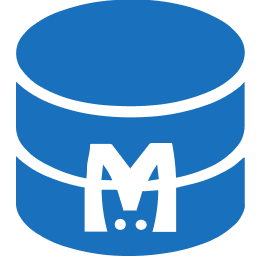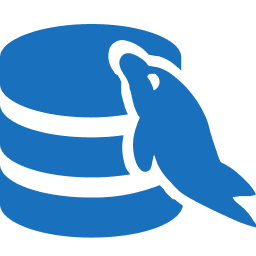You are looking at the documentation of a prior release. To read the documentation of the latest release, please
visit here.
New to KubeDB? Please start here.
Postgres(gitops.kubedb.com/v1alpha1)
What is gitops.kubedb.com Postgres
Postgres is a Kubernetes Custom Resource Definitions (CRD) which is under the gitops.kubedb.com/v1alpha1 API group. It provides the same specification as the standard KubeDB Postgres CRD, but is designed to work with GitOps workflows. This allows you to manage your PostgreSQL databases using GitOps principles, where the desired state of your database is stored in a Git repository.
You only need to describe the desired database configuration in a gitops Postgres object through GitOps tools like ArgoCD or FluxCD. The GitOps tool will monitor the Git repository for changes, and when a change is detected, it will apply the changes to your Kubernetes cluster and create necessary OpsRequest. This means you don’t have to manually create or update the database configuration in your cluster; instead, you just update the Git repository with the desired state of your database configuration
, and the KubeDB gitops operator will create/update standard Kubernetes database objects in the desired state for you.
Postgres Spec
As with all other Kubernetes objects, a gitops Postgres needs apiVersion, kind, and metadata fields. It also needs a .spec section.
This object reflects the same specification as the standard KubeDB Postgres CRD. The Postgres CRD is used to create and manage PostgreSQL databases in Kubernetes.
Below is an example Postgres object.
apiVersion: gitops.kubedb.com/v1alpha1
kind: Postgres
metadata:
name: p1
namespace: demo
spec:
version: "13.13"
replicas: 2
standbyMode: Hot
streamingMode: Asynchronous
leaderElection:
leaseDurationSeconds: 15
renewDeadlineSeconds: 10
retryPeriodSeconds: 2
authSecret:
name: p1-auth
storageType: "Durable"
storage:
storageClassName: standard
accessModes:
- ReadWriteOnce
resources:
requests:
storage: 1Gi
init:
script:
configMap:
name: pg-init-script
monitor:
agent: prometheus.io/operator
prometheus:
serviceMonitor:
labels:
app: kubedb
interval: 10s
configSecret:
name: pg-custom-config
podTemplate:
metadata:
annotations:
passMe: ToDatabasePod
controller:
annotations:
passMe: ToPetSet
spec:
serviceAccountName: my-custom-sa
schedulerName: my-scheduler
nodeSelector:
disktype: ssd
imagePullSecrets:
- name: myregistrykey
containers:
- name: postgres
env:
- name: POSTGRES_DB
value: pgdb
resources:
requests:
memory: "64Mi"
cpu: "250m"
limits:
memory: "128Mi"
cpu: "500m"
serviceTemplates:
- alias: primary
metadata:
annotations:
passMe: ToService
spec:
type: NodePort
ports:
- name: http
port: 5432
- alias: standby
metadata:
annotations:
passMe: ToReplicaService
spec:
type: NodePort
ports:
- name: http
port: 5432
deletionPolicy: "Halt"
spec.version
spec.version is a required field that specifies the name of the PostgresVersion crd where the docker images are specified. Currently, when you install KubeDB, it creates the following PostgresVersion resources,
~ $ kubectl get pgversion
NAME VERSION DISTRIBUTION DB_IMAGE DEPRECATED AGE
10.23 10.23 Official ghcr.io/appscode-images/postgres:10.23-alpine 35d
10.23-bullseye 10.23 Official ghcr.io/appscode-images/postgres:10.23-bullseye 35d
11-bullseye-postgis 11.22 PostGIS postgis/postgis:11-3.3 35d
11.22 11.22 Official ghcr.io/appscode-images/postgres:11.22-alpine 35d
11.22-bookworm 11.22 Official ghcr.io/appscode-images/postgres:11.22-bookworm 35d
12-bullseye-postgis 12.18 PostGIS postgis/postgis:12-3.4 35d
12.17 12.17 Official ghcr.io/appscode-images/postgres:12.17-alpine 35d
12.17-bookworm 12.17 Official ghcr.io/appscode-images/postgres:12.17-bookworm 35d
12.22 12.22 Official ghcr.io/appscode-images/postgres:12.22-alpine 35d
12.22-bookworm 12.22 Official ghcr.io/appscode-images/postgres:12.22-bookworm 35d
13-bullseye-postgis 13.14 PostGIS postgis/postgis:13-3.4 35d
13.13 13.13 Official ghcr.io/appscode-images/postgres:13.13-alpine 35d
13.13-bookworm 13.13 Official ghcr.io/appscode-images/postgres:13.13-bookworm 35d
13.18 13.18 Official ghcr.io/appscode-images/postgres:13.18-alpine 35d
13.18-bookworm 13.18 Official ghcr.io/appscode-images/postgres:13.18-bookworm 35d
13.20 13.20 Official ghcr.io/appscode-images/postgres:13.20-alpine 35d
13.20-bookworm 13.20 Official ghcr.io/appscode-images/postgres:13.20-bookworm 35d
14-bullseye-postgis 14.11 PostGIS postgis/postgis:14-3.4 35d
14.10 14.10 Official ghcr.io/appscode-images/postgres:14.10-alpine 35d
14.10-bookworm 14.10 Official ghcr.io/appscode-images/postgres:14.10-bookworm 35d
14.13 14.13 Official ghcr.io/appscode-images/postgres:14.13-alpine 35d
14.13-bookworm 14.13 Official ghcr.io/appscode-images/postgres:14.13-bookworm 35d
14.15 14.15 Official ghcr.io/appscode-images/postgres:14.15-alpine 35d
14.15-bookworm 14.15 Official ghcr.io/appscode-images/postgres:14.15-bookworm 35d
14.17 14.17 Official ghcr.io/appscode-images/postgres:14.17-alpine 35d
14.17-bookworm 14.17 Official ghcr.io/appscode-images/postgres:14.17-bookworm 35d
15-bullseye-postgis 15.6 PostGIS postgis/postgis:15-3.4 35d
15.10 15.10 Official ghcr.io/appscode-images/postgres:15.10-alpine 35d
15.10-bookworm 15.10 Official ghcr.io/appscode-images/postgres:15.10-bookworm 35d
15.12 15.12 Official ghcr.io/appscode-images/postgres:15.12-alpine 35d
15.12-bookworm 15.12 Official ghcr.io/appscode-images/postgres:15.12-bookworm 35d
15.12-documentdb 15.12 DocumentDB ghcr.io/appscode-images/postgres-documentdb:15-0.102.0-ferretdb-2.0.0 35d
15.5 15.5 Official ghcr.io/appscode-images/postgres:15.5-alpine 35d
15.5-bookworm 15.5 Official ghcr.io/appscode-images/postgres:15.5-bookworm 35d
15.8 15.8 Official ghcr.io/appscode-images/postgres:15.8-alpine 35d
15.8-bookworm 15.8 Official ghcr.io/appscode-images/postgres:15.8-bookworm 35d
16.1 16.1 Official ghcr.io/appscode-images/postgres:16.1-alpine 35d
16.1-bookworm 16.1 Official ghcr.io/appscode-images/postgres:16.1-bookworm 35d
16.2-bullseye-postgis 16.2 PostGIS postgis/postgis:16-3.4 35d
16.4 16.4 Official ghcr.io/appscode-images/postgres:16.4-alpine 35d
16.4-bookworm 16.4 Official ghcr.io/appscode-images/postgres:16.4-bookworm 35d
16.6 16.6 Official ghcr.io/appscode-images/postgres:16.6-alpine 35d
16.6-bookworm 16.6 Official ghcr.io/appscode-images/postgres:16.6-bookworm 35d
16.8 16.8 Official ghcr.io/appscode-images/postgres:16.8-alpine 35d
16.8-bookworm 16.8 Official ghcr.io/appscode-images/postgres:16.8-bookworm 35d
16.8-documentdb 16.8 DocumentDB ghcr.io/appscode-images/postgres-documentdb:16-0.102.0-ferretdb-2.0.0 35d
17.2 17.2 Official ghcr.io/appscode-images/postgres:17.2-alpine 35d
17.2-bookworm 17.2 Official ghcr.io/appscode-images/postgres:17.2-bookworm 35d
17.4 17.4 Official ghcr.io/appscode-images/postgres:17.4-alpine 35d
17.4-bookworm 17.4 Official ghcr.io/appscode-images/postgres:17.4-bookworm 35d
17.4-documentdb 17.4 DocumentDB ghcr.io/appscode-images/postgres-documentdb:17-0.102.0-ferretdb-2.0.0 35d
timescaledb-2.14.2-pg13 13.14 TimescaleDB timescale/timescaledb:2.14.2-pg13-oss 35d
timescaledb-2.14.2-pg14 14.11 TimescaleDB timescale/timescaledb:2.14.2-pg14-oss 35d
timescaledb-2.14.2-pg15 15.6 Official timescale/timescaledb:2.14.2-pg15-oss 35d
timescaledb-2.14.2-pg16 16.2 Official timescale/timescaledb:2.14.2-pg16-oss 35d
Updating this field creates a Postgres
UpdateVersionOpsRequest by GitOps operator.
spec.replicas
spec.replicas specifies the total number of primary and standby nodes in Postgres database cluster configuration. One pod is selected as Primary and others act as standby replicas. KubeDB uses PodDisruptionBudget to ensure that majority of the replicas are available during voluntary disruptions.
To learn more about how to setup a HA PostgreSQL cluster in KubeDB, please visit here.
Updating this field creates a
HorizontalScalingOpsRequest by GitOps operator.
spec.standbyMode
spec.standby is an optional field that specifies the standby mode (Warm / Hot) to use for standby replicas. In hot standby mode, standby replicas can accept connection and run read-only queries. In warm standby mode, standby replicas can’t accept connection and only used for replication purpose.
spec.streamingMode
spec.streamingMode is an optional field that specifies the streaming mode (Synchronous / Asynchronous) of the standby replicas. KubeDB currently supports only Asynchronous streaming mode.
spec.leaderElection
There are three fields under Postgres CRD’s spec.leaderElection. These values defines how fast the leader election can happen.
leaseDurationSeconds: This is the duration in seconds that non-leader candidates will wait to force acquire leadership. This is measured against time of last observed ack. Default 15 sec.renewDeadlineSeconds: This is the duration in seconds that the acting master will retry refreshing leadership before giving up. Normally, LeaseDuration * 2 / 3. Default 10 sec.retryPeriodSeconds: This is the duration in seconds the LeaderElector clients should wait between tries of actions. Normally, LeaseDuration / 3. Default 2 sec.
If the Cluster machine is powerful, user can reduce the times. But, Do not make it so little, in that case Postgres will restarts very often.
spec.authSecret
spec.authSecret is an optional field that points to a Secret used to hold credentials for postgres database. If not set, KubeDB operator creates a new Secret with name {postgres-name}-auth that hold username and password for postgres database.
If you want to use an existing or custom secret, please specify that when creating the Postgres object using spec.authSecret.name. This Secret should contain superuser username as POSTGRES_USER key and superuser password as POSTGRES_PASSWORD key. Secrets provided by users are not managed by KubeDB, and therefore, won’t be modified or garbage collected by the KubeDB operator (version >= 0.13.0).
Example:
$ kubectl create secret generic p1-auth -n demo \
--from-literal=POSTGRES_USER=not@user \
--from-literal=POSTGRES_PASSWORD=not@secret
secret "p1-auth" created
$ kubectl get secret -n demo p1-auth -o yaml
apiVersion: v1
data:
POSTGRES_PASSWORD: bm90QHNlY3JldA==
POSTGRES_USER: bm90QHVzZXI=
kind: Secret
metadata:
creationTimestamp: 2018-09-03T11:25:39Z
name: p1-auth
namespace: demo
resourceVersion: "1677"
selfLink: /api/v1/namespaces/demo/secrets/p1-auth
uid: 15b3e8a1-af6c-11e8-996d-0800270d7bae
type: Opaque
Updating this field create a
RotateAuthOpsRequest by GitOps operator.
spec.storageType
spec.storageType is an optional field that specifies the type of storage to use for database. It can be either Durable or Ephemeral. The default value of this field is Durable. If Ephemeral is used then KubeDB will create Postgres database using emptyDir volume. In this case, you don’t have to specify spec.storage field.
spec.storage
If you don’t set spec.storageType: to Ephemeral then spec.storage field is required. This field specifies the StorageClass of PVCs dynamically allocated to store data for the database. This storage spec will be passed to the PetSet created by KubeDB operator to run database pods. You can specify any StorageClass available in your cluster with appropriate resource requests.
spec.storage.storageClassNameis the name of the StorageClass used to provision PVCs. PVCs don’t necessarily have to request a class. A PVC with its storageClassName set equal to "" is always interpreted to be requesting a PV with no class, so it can only be bound to PVs with no class (no annotation or one set equal to “”). A PVC with no storageClassName is not quite the same and is treated differently by the cluster depending on whether the DefaultStorageClass admission plugin is turned on.spec.storage.accessModesuses the same conventions as Kubernetes PVCs when requesting storage with specific access modes.spec.storage.resourcescan be used to request specific quantities of storage. This follows the same resource model used by PVCs.
To learn how to configure spec.storage, please visit the links below:
Updating this field creates a
VolumeExpansionOpsRequest by GitOps operator.
spec.init
spec.init is an optional section that can be used to initialize a newly created Postgres database. PostgreSQL databases can be initialized from these three ways:
- Initialize from Script
- Initialize from Snapshot
Initialize via Script
To initialize a PostgreSQL database using a script (shell script, db migrator, etc.), set the spec.init.script section when creating a Postgres object. script must have the following information:
- VolumeSource: Where your script is loaded from.
Below is an example showing how a script from a configMap can be used to initialize a PostgreSQL database.
apiVersion: gitops/kubedb.com/v1alpha1
kind: Postgres
metadata:
name: postgres-db
namespace: demo
spec:
version: "13.13"
init:
script:
configMap:
name: pg-init-script
In the above example, Postgres will execute provided script once the database is running. For more details tutorial on how to initialize from script, please visit here.
spec.monitor
PostgreSQL managed by KubeDB can be monitored with builtin-Prometheus and Prometheus operator out-of-the-box. To learn more,
Enabling monitoring creates a
RestartOpsRequest by GitOps operator.
spec.configSecret
spec.configSecret is an optional field that allows users to provide custom configuration for PostgreSQL. This field accepts a VolumeSource. You can use any Kubernetes supported volume source such as configMap, secret, azureDisk etc. To learn more about how to use a custom configuration file see here.
Updating this field will create a
ReconfigureOpsRequest by GitOps operator.
spec.podTemplate
KubeDB allows providing a template for database pod through spec.podTemplate. KubeDB operator will pass the information provided in spec.podTemplate to the PetSet created for Postgres database.
KubeDB accept following fields to set in spec.podTemplate:
- metadata
- annotations (pod’s annotation)
- controller
- annotations (petset’s annotation)
- spec:
- containers
- volumes
- podPlacementPolicy
- serviceAccountName
- initContainers
- imagePullSecrets
- nodeSelector
- schedulerName
- tolerations
- priorityClassName
- priority
- securityContext
You can check out the full list here.
Uses of some field of spec.podTemplate is described below,
spec.podTemplate.spec.tolerations
The spec.podTemplate.spec.tolerations is an optional field. This can be used to specify the pod’s tolerations.
spec.podTemplate.spec.volumes
The spec.podTemplate.spec.volumes is an optional field. This can be used to provide the list of volumes that can be mounted by containers belonging to the pod.
spec.podTemplate.spec.podPlacementPolicy
spec.podTemplate.spec.podPlacementPolicy is an optional field. This can be used to provide the reference of the podPlacementPolicy. This will be used by our Petset controller to place the db pods throughout the region, zone & nodes according to the policy. It utilizes kubernetes affinity & podTopologySpreadContraints feature to do so.
spec.podTemplate.spec.containers
The spec.podTemplate.spec.containers can be used to provide the list containers and their configurations for to the database pod. some of the fields are described below,
spec.podTemplate.spec.containers[].name
The spec.podTemplate.spec.containers[].name field used to specify the name of the container specified as a DNS_LABEL. Each container in a pod must have a unique name (DNS_LABEL). Cannot be updated.
spec.podTemplate.spec.containers[].args
spec.podTemplate.spec.containers[].args is an optional field. This can be used to provide additional arguments to database installation.
spec.podTemplate.spec.containers[].env
spec.podTemplate.spec.containers[].env is an optional field that specifies the environment variables to pass to the Postgres docker image. To know about supported environment variables, please visit here.
Note that, the KubeDB operator does not allow POSTGRES_USER and POSTGRES_PASSWORD environment variable to set in spec.podTemplate.spec.env. If you want to set the superuser username and password, please use spec.authSecret instead described earlier.
If you try to set POSTGRES_USER or POSTGRES_PASSWORD environment variable in Postgres crd, KubeDB operator will reject the request with following error,
Error from server (Forbidden): error when creating "./postgres.yaml": admission webhook "postgres.validators.kubedb.com" denied the request: environment variable POSTGRES_PASSWORD is forbidden to use in Postgres spec
Also, note that KubeDB does not allow to update the environment variables as updating them does not have any effect once the database is created. If you try to update environment variables, KubeDB operator will reject the request with following error,
Error from server (BadRequest): error when applying patch:
...
for: "./postgres.yaml": admission webhook "postgres.validators.kubedb.com" denied the request: precondition failed for:
...
At least one of the following was changed:
apiVersion
kind
name
namespace
spec.standby
spec.streaming
spec.authSecret
spec.storageType
spec.storage
spec.podTemplate.spec.nodeSelector
spec.init
spec.podTemplate.spec.containers[].resources
spec.podTemplate.spec.containers[].resources is an optional field. This can be used to request compute resources required by containers of the database pods. To learn more, visit here.
spec.podTemplate.spec.serviceAccountName
serviceAccountName is an optional field supported by KubeDB Operator (version 0.13.0 and higher) that can be used to specify a custom service account to fine tune role based access control.
If this field is left empty, the KubeDB operator will create a service account name matching Postgres crd name. Role and RoleBinding that provide necessary access permissions will also be generated automatically for this service account.
If a service account name is given, but there’s no existing service account by that name, the KubeDB operator will create one, and Role and RoleBinding that provide necessary access permissions will also be generated for this service account.
If a service account name is given, and there’s an existing service account by that name, the KubeDB operator will use that existing service account. Since this service account is not managed by KubeDB, users are responsible for providing necessary access permissions manually. Follow the guide here to grant necessary permissions in this scenario.
spec.podTemplate.spec.imagePullSecrets
spec.podTemplate.spec.imagePullSecrets is an optional field that points to secrets to be used for pulling docker image if you are using a private docker registry. For more details on how to use private docker registry, please visit here.
spec.podTemplate.spec.nodeSelector
spec.podTemplate.spec.nodeSelector is an optional field that specifies a map of key-value pairs. For the pod to be eligible to run on a node, the node must have each of the indicated key-value pairs as labels (it can have additional labels as well). To learn more, see here .
Updating
postgres/pg-coordinatorcontainers resources will create aVerticalScalingOpsRequest by GitOps operator.
spec.serviceTemplate
KubeDB creates two different services for each Postgres instance. One of them is a master service named <postgres-name> and points to the Postgres Primary pod/node. Another one is a replica service named <postgres-name>-replicas and points to Postgres replica pods/nodes.
These master and replica services can be customized using spec.serviceTemplate and spec.replicaServiceTemplate respectively.
You can provide template for the master service using spec.serviceTemplate. This will allow you to set the type and other properties of the service. If spec.serviceTemplate is not provided, KubeDB will create a master service of type ClusterIP with minimal settings.
KubeDB allows following fields to set in spec.serviceTemplate:
- metadata:
- annotations
- spec:
- type
- ports
- clusterIP
- externalIPs
- loadBalancerIP
- loadBalancerSourceRanges
- externalTrafficPolicy
- healthCheckNodePort
- sessionAffinityConfig
See here to understand these fields in detail.
spec.replicaServiceTemplate
You can provide template for the replica service using spec.replicaServiceTemplate. If spec.replicaServiceTemplate is not provided, KubeDB will create a replica service of type ClusterIP with minimal settings.
The fileds of spec.replicaServiceTemplate is similar to spec.serviceTemplate, that is:
- metadata:
- annotations
- spec:
- type
- ports
- clusterIP
- externalIPs
- loadBalancerIP
- loadBalancerSourceRanges
- externalTrafficPolicy
- healthCheckNodePort
See here to understand these fields in detail.
spec.deletionPolicy
deletionPolicy gives flexibility whether to nullify(reject) the delete operation of Postgres crd or which resources KubeDB should keep or delete when you delete Postgres crd. KubeDB provides following four termination policies:
- DoNotTerminate
- Halt
- Delete (
Default) - WipeOut
When deletionPolicy is DoNotTerminate, KubeDB takes advantage of ValidationWebhook feature in Kubernetes 1.9.0 or later clusters to provide safety from accidental deletion of database. If admission webhook is enabled, KubeDB prevents users from deleting the database as long as the spec.deletionPolicy is set to DoNotTerminate.
Following table show what KubeDB does when you delete Postgres crd for different termination policies,
| Behavior | DoNotTerminate | Halt | Delete | WipeOut |
|---|---|---|---|---|
| 1. Block Delete operation | ✓ | ✗ | ✗ | ✗ |
| 2. Create Dormant Database | ✗ | ✓ | ✗ | ✗ |
| 3. Delete PetSet | ✗ | ✓ | ✓ | ✓ |
| 4. Delete Services | ✗ | ✓ | ✓ | ✓ |
| 5. Delete PVCs | ✗ | ✗ | ✓ | ✓ |
| 6. Delete Secrets | ✗ | ✗ | ✗ | ✓ |
| 7. Delete Snapshots | ✗ | ✗ | ✗ | ✓ |
| 8. Delete Snapshot data from bucket | ✗ | ✗ | ✗ | ✓ |
If you don’t specify spec.deletionPolicy KubeDB uses Halt termination policy by default.
Lastly, as
kubedb.com/v1andgitops.kubedb.com/v1alpha1are two different API groups, you can use both of them in the same cluster. They share exactly the same spec, if you update some fields that might need changes usingOpsRequests, GitOps operator will create and reflect those changes in the database. You don’t need to create ops request manually. If updating some fields don’t require any ops request, GitOps operator will simply patch the actualPostgresdatabase CRO with these changes.
Next Steps
- Learn how to use KubeDB to run a PostgreSQL database here.
- Want to hack on KubeDB? Check our contribution guidelines.



































